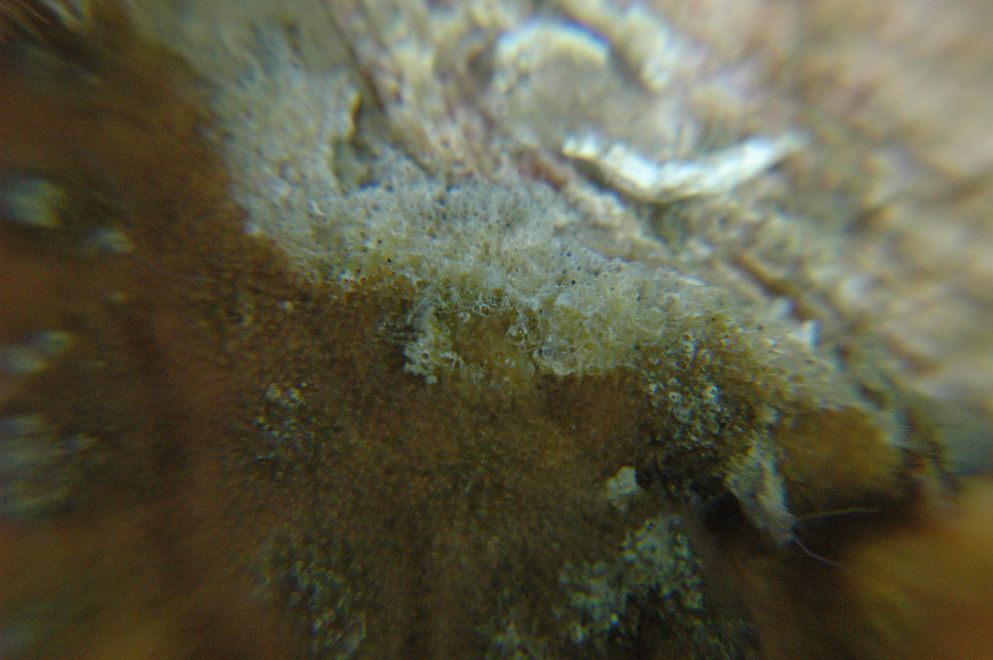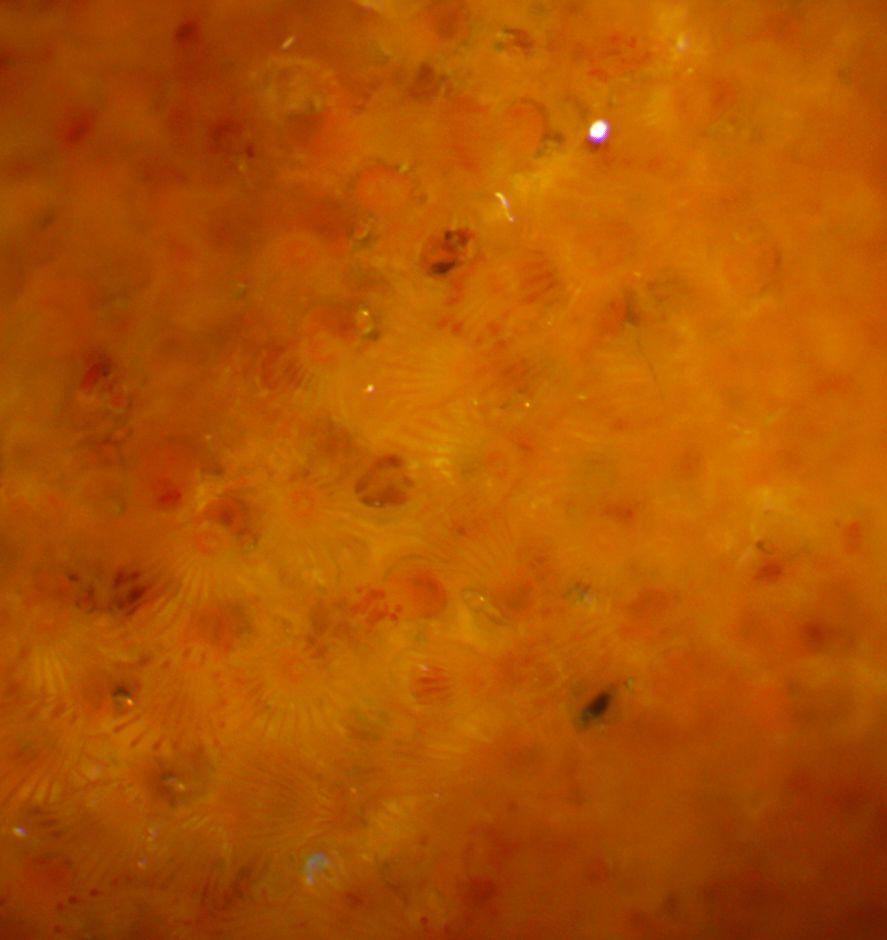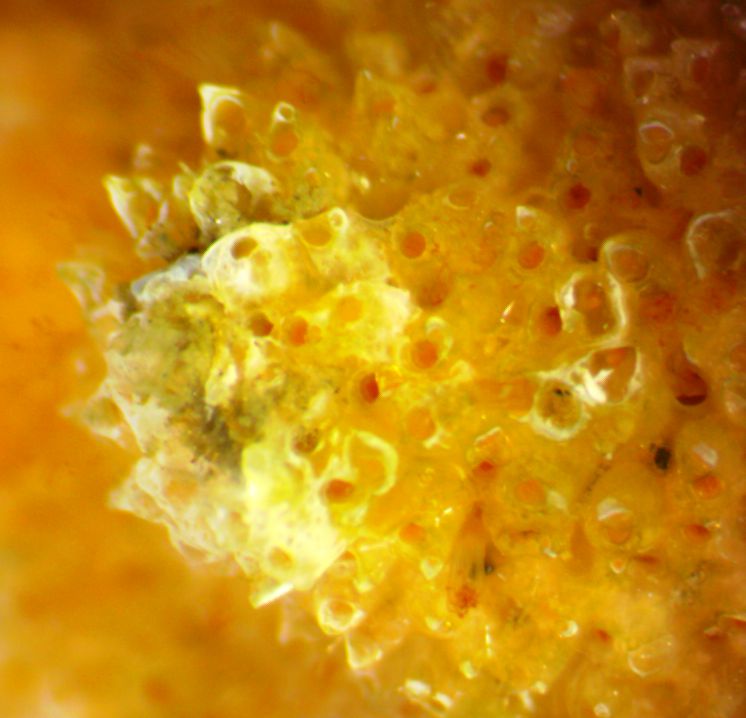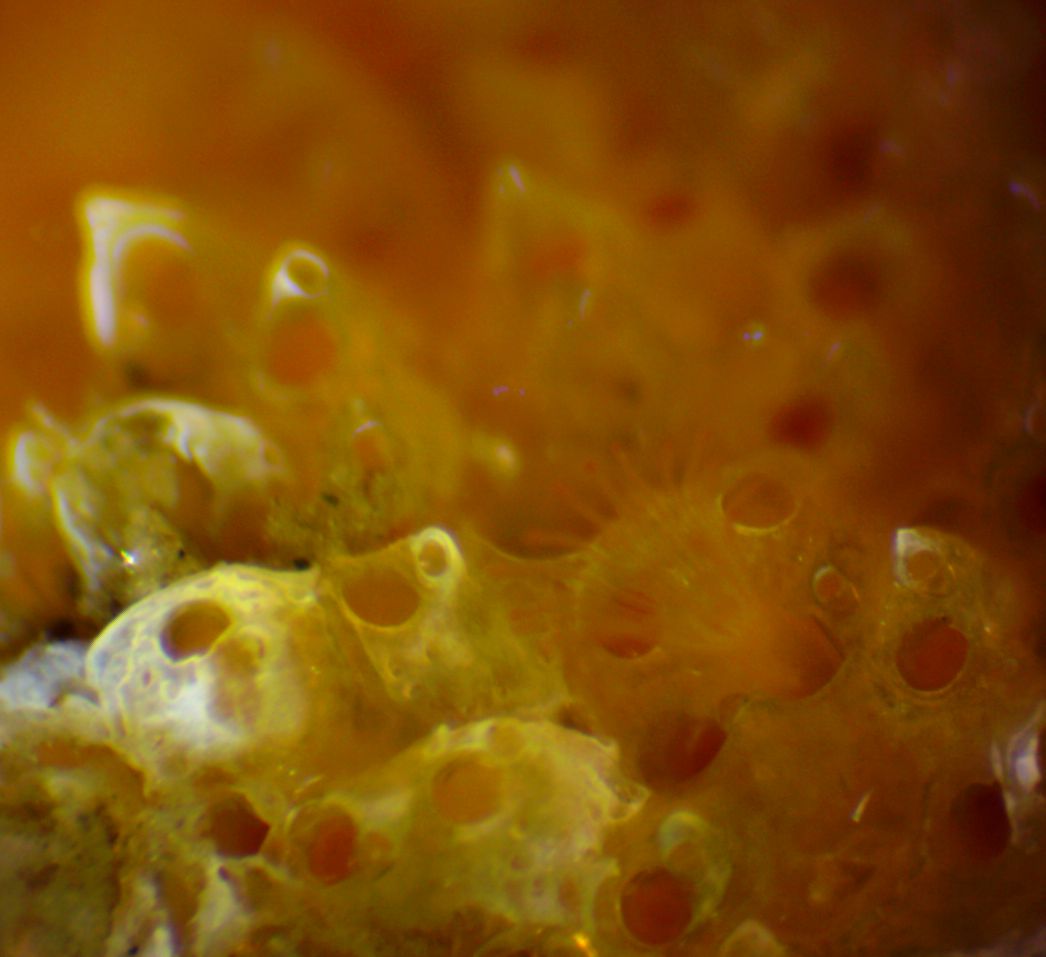Rhamphostomella costata Lorenz, 1886Common name(s): |
|
| Synonyms: |  |
|
Class Gymnolaemata
Suborder Ascophora
Family Smittinidae
|
|
| A colony of Rhamphostomella costata on the surface of a Chlamys hastata scallop. Notice that the colony is a thick yellow crust, about 1/2 cm thick. The orange patch is a Boltenia villosa tunicate. | |
| (Photo by: Dave Cowles, August 2017) | |
Description: This Cheilostome bryozoan forms a thick, encrusting colony. The zooecia are more complex than simple calcified tubes. The aperture of each zooecium has an operculum. At least 3/4 of the frontal portion is calcified, so that there are no obvious pores on the frontal portion. Moderate-sized avicularia can be found mounted on a mound (umbo) on the frontal of each zooid on the edge of the aperture, but they are not on the midline of the zooid frontal. The rostrum and mandible of the avicularium, though it is spaced quite close to the aperture, do not hang over the aperture. The mandible of the avicularium is spatulate. The zooids have no cardelles but do have a lyrula. The frontal has prominent ribs running from the margins to the umbo.
How to Distinguish from Similar Species: Rhamphostomella cellata has a small avicularium that fits into the rim of the peristome. Several other Rhamphostomella species have an avicularium that overhangs the aperture.
Geographical Range: North Pacific and Arctic Oceans including Kodiak, Alaska, the coastline of Russia, and Svalbard Island north of Norway.
Depth Range:
Habitat: (It is uncommon to find this bryozoan encrusting a scallop, as this one was)
Biology/Natural
History: This species
incubates a few large eggs at a time within a brood chamber (Ostrovsky
et al., 2009).
| Return to: | |||
| Main Page | Alphabetic Index | Systematic Index | Glossary |
References:
Dichotomous Keys:Kozloff, 1987, 1996
General References:
Scientific Articles:
Ostrovsky, Andrew N., Dennis P. Gordon, and Scott Lidgard, 2009.
Independent
evolution of matrotrophy in the major classes of Bryozoa: transitions
among
reproductive patterns and their ecological background. Marine Ecology
Progress
Series 378: pp 113-124
Web sites:
General Notes and Observations: Locations, abundances, unusual behaviors:

This view of the border of the colony shows that the living surface
seems to be built up over the remains of many dead zooids
underneath, and that the crust builds up thickly enough to enclose the
tubes of small tubeworms (bottom right)

The surface of the colony is crowded with actively feeding zooids,
as shown here. For a movie of their action, click here.

The apertures
with their associated avicularia
are most easily seen in a part of the colony where either calcification
or some mortality has provided some space. Most of the zooids
in this view are still alive. Note that the apertures
are closed with an operculum
when the lophophore
is withdrawn, and also that each aperture
has a mound next to it with a smaller aperture for the avicularium
to protrude. The avicularium
is close to the aperture
but does not overhang it.

This view shows more of the apertures
with associated avicularia.
Authors and Editors
of Page:
Dave Cowles (2017): Created original page
CSS coding for page developed by Jonathan Cowles
Salish Sea Invertebrates web site provided courtesy of Walla
Walla University